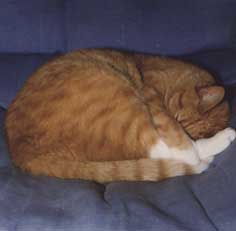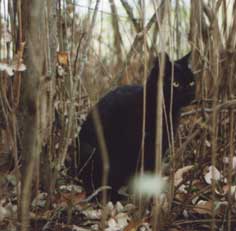Ten Ways Cats Age More Gracefully Than Humans
(In no particular order and in no way claiming to be a definitive list.)
 Being quadrupedal, rather than bipedal, cats are much less likely to trip, stumble, fall down and not get up again, break something.
Being quadrupedal, rather than bipedal, cats are much less likely to trip, stumble, fall down and not get up again, break something.- While people are often aware that they’re slowing down, physically or mentally or both, cats are not conscious of this. Mice may move faster, but cats definitely don’t slow down – they’re just being their usual cool selves.
- Even when cats lose a faculty, such as sight, it has limited impact on their functioning. A blind cat reads as well as it could before going blind and can still find its food dish and the sunny spot without issue.
- As with people, elderly cats may sleep more hours than they used to, however cats normally sleep about eighteen hours a day anyway, so who’s going to notice?
- Because of their high metabolism, if a cat becomes morbidly ill, it usually dies quickly, rather than suffering the lingering demise humans seem so practiced at.
- Unlike people, cats are very in the
 moment. They don’t fall into reminiscences deluding themselves about the “good old days.”
moment. They don’t fall into reminiscences deluding themselves about the “good old days.” - Cats rarely complain about aching joints, diminishing faculties, lack of appetite, etc., even though they may experience these.
- The existence of a cat is a very immediate thing – now they’re here, now they’re gone. There’s no property, money, or material goods for survivors to quibble over and no lawyers need be involved.
- Whereas people often become more prickly with age, dropping masks of decorum, cats often become even more cuddly, happy to be warmly on your lap, purring all the while. (Notice I said “often” in both cases, not always.)
- Cats never think about going to the gym, diet (other than liking or disliking a given food), heart disease, stroke, cancer, osteoporosis, life insurance, critical care, what’s to be done with the remains etc. and they CERTAINLY NEVER consider plastic surgery, chemical peels or botox injections.
© Catherine Jenkins, 2003
Leave a reply
